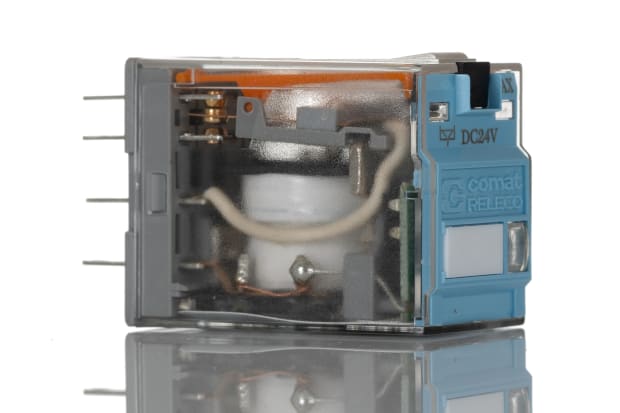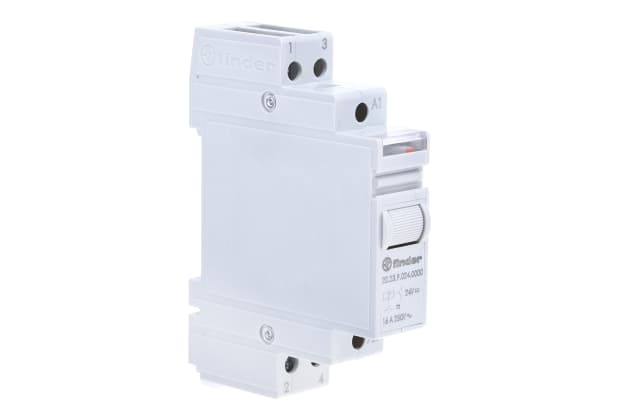- Published 10 Jan 2023
- Last Modified 12 Feb 2024
- 10 min
The Complete Guide To Latching Relays

This guide is part of our Industrial Automation hub where you can discover more about AI, automation and control.
To determine which specific kind of latching relay switch would be ideal for use in a given application or environment, some more detail about the precise nature of the task will need to be considered. In this guide, we’ll look more closely at what each of the different latching relay circuit switch types available, as well as how they work, and in what sorts of scenarios they might be put to best use.
What are latching relays?
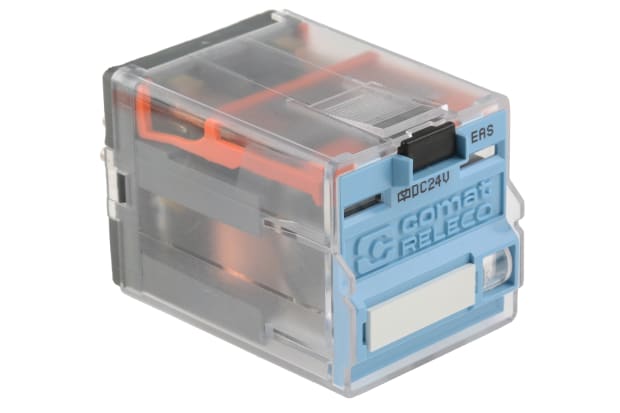
A latching relay is a subtype of electromechanical or electromagnetic switch, commonly chosen in scenarios where the operator needs to control (either switch off or amplify) a large amount of current flow.
The unique structure of a latching relay enables it to do so using a much smaller current to activate the switch than many other types of switching devices require, and the latching relay does not require the continuous application of current in order to hold its position once actuated - hence ‘latching’.
A general-purpose relay switch is designed to function as a ‘bridge’ on one or more connected devices or circuits, receiving an input signal from one source and transmitting an on/off (set/reset) output to another. This is achieved when an electromagnetic current, generated by the electrical input from the first device attached to the relay causes the contacts in the switch to open or close. Doing so either completes or breaks the circuit the relay is positioned on, and therefore enables or blocks the transmission of the electrical signal to the rest of the circuit(s) it’s connected to.
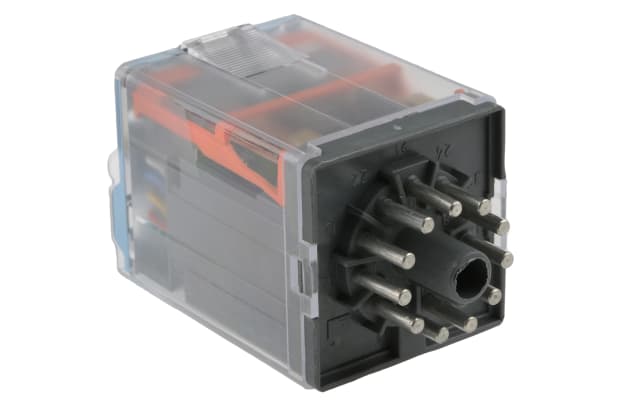
In specific scenarios, a particular type of switch known as a latching relay will need to be used. As well as providing the ability to control larger currents than standard relays, latching relays offer the notable benefit of having positional ‘memory’: in short, once actuated, they will remain in their last position without the need for any further input or current until explicitly told to switch back to the opposite position again via a second current pulse. This is in contrast to a non-latching relay, which will only maintain its state while being actuated.
In practice, the term ‘latching relay’ is really a generic one, used to refer to any of the various sorts of relay switches that will retain their last position until forced to move again. They can use either a magnetic or a mechanical system to achieve this latching function and can feature either a single-winding or a double-winding coil (more on this distinction in later sections).
As the name implies, magnetic latching relays are held in place by electromagnetic forces, whereas a mechanical latching relay is held in place by a physical locking mechanism.
How do latching relays work?
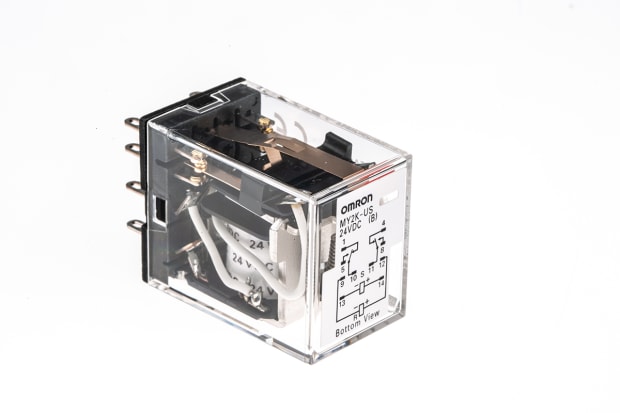
The key components in a magnetic or mechanical latching relay are:
- terminals or solenoids made from one or more wire coils (most commonly copper wire, which is low-resistance and helps to facilitate efficient power transmission)
- a small metal strip, or armature, intended to transition between these two coils and provide the on/off gateway to the rest of the circuit(s)
When subjected to a brief pulse of relatively low input current, the coil(s) in a latching relay switch generates a magnetic field, pushing or pulling the armature - often known as a ‘reed switch’ in electromagnetic relays - suspended between them. This causes the strip to move from one to the other terminal accordingly. The switching action can either be set up to complete or break a single circuit or as a method of switching power between two separate circuits.
As discussed in previous sections, the unique advantage of a latching relay, as opposed to general-purpose or non-latching relays, is that the armature on a latching relay will remain in the last position it was moved to until forced to change states (i.e. to move back in the opposite direction again via the application of a further pulse of current).
Owing to this key characteristic, latching relay switches are known as being ‘bistable’. Because it only requires an input current for those brief voltage pulses necessary to switch it between one state and the other, a latching relay will offer a lower power draw over extended use periods than most other types of non-latching relay.
What types of latching relays are there?
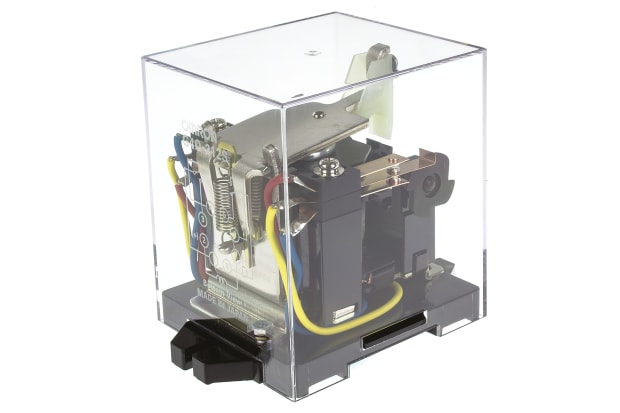
As noted in the opening section of this guide, latching relays can be designed to operate using either a magnetic or a mechanical model. There is also a third common type of latching relay on the market, namely ‘impulse switching’ relays.
In this section, we’ll take a closer look at each of the three main latching relay switch types in turn. Firstly though, note that there here are two main subtypes of latching relay, namely single and dual coil variants:
- Single coil magnetic latching relay devices require polarity to be switched as the current pulse is sent to the coil, in order to actuate the metal strip from one to the other position between two terminals
- In other words, the one coil functions as both set/reset, and depends on the input flow direction being reversed to do so
- Conversely, dual coil devices feature both an individual set and reset coil, and a voltage pulse can be applied to either coil when actuating the switch in order to move it and perform the required action
Magnetic latching relays
In the widely used magnetic configuration for latching relays, a single pulse of current to a coil briefly generates an electrical field that will move a reed switch in one or the other direction. When the pulse stops, the latching relay remains electromagnetically held in whichever position it was just moved to, and will not return to the opposite position until another, redirected pulse is sent through the coil(s) to move it back again.
As well as offering the lower power draw common to all latching relays, magnetic latching relays are therefore especially useful in applications where interrupting the current flow to the coils will not produce the undesired effect of moving the switch to a different position between the two contacts.
They can also perform the switching action very quickly, tend to be less bulky than mechanical variants, and generally offer a longer lifespan due to the very limited extent of the physical movement taking place within the switch.
Mechanical latching relays
As opposed to a magnetic latching system, a mechanical latching relay uses a physical locking mechanism to hold the armature in place against the contact in the last position it was moved to. Electromechanical relays bring various pros and cons into play:
- They tend to feature larger, bulkier contacts than electromagnetic versions, and are therefore less flexible units in terms of space requirements
- Mechanical latching relays tend to be better at coping with unexpected surge currents
- Speed of switching is limited due to the extent of mechanical movement required, making them unsuitable for some applications
- The lifespan of mechanical latching relays is typically somewhat shorter than for magnetic versions in terms of overall number of actuations
- However, current size is an equally important consideration in terms of overall longevity for any relay switch
- The projected lifetime of mechanical relays under higher loads will often decrease much more slowly over time than for magnetic reed versions
- Its contacts will be less prone to weakening during thermal cycling than an electromagnetic latching relay
Impulse latching relays
Impulse relays are a form of magnetic latching relay that change the contact state with each subsequent input pulse. Upon application of power, the impulse latching relay determines which position the switch is in automatically, and energises the opposite coil to actuate or move it each time.
The impulse latching relay typically does this via the use of a solid state steering circuit, which allows for the input pulse to be unidirectional, with no need to redirect the control pulse or reverse the polarity. Impulse switches are therefore well suited to applications that involve the need to turn a single device on or off, from one or more locations, with a single momentary switch or push button.
What are the differences between latching and non-latching relays?
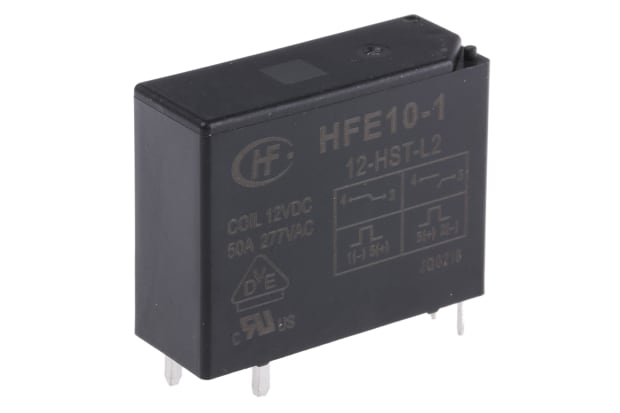
We’ve already touched on the fact that the core difference with latching relays, in comparison to other relay switch types, is their ability to hold and retain a given position indefinitely between ‘switching’ pulses, without the need for a continuous current input in order to remain in a given position. For this reason, latching relays are also known as ‘bistable’, ‘keep’, or "stay" relays.
Other relay types will require continuous current or voltage input while ever they’re being asked to remain in a given position - and, once the current is removed, they’ll return to their ‘default’ orientation. This can be a desirable feature in many applications, but often it’s useful to employ a latching relay instead, on the basis that it will move from one position to the other when (and only when) it’s briefly exposed to further pulses of current. A latching relay therefore effectively has no default position.
Again, this can be especially advantageous in scenarios where a higher degree of energy efficiency is of value. This is often the case where the relay is likely to be in fairly constant use, and in particular when it’s frequently being asked to ‘remember’ its position or state (i.e. to switch and hold between two distinct positions without returning automatically to a default open or closed position in between each manual instruction).
Latching relay applications
There are a great many day-to-day uses for latching relay switches found across a diverse array of environments and sectors. Some of the more widespread industrial applications that benefit from the unique latching relay function include:
- Industrial counting and sorting systems
- Power supplies
- HVAC, refrigeration and anti-condensation systems
- Industrial cleaning equipment (including automated car-washing devices)
- Commercial coffee machines and other automated food preparation equipment
Popular latching relays brands
Such is the widespread potential for latching relay applications in most industrial sectors, many large-scale electronics and component companies offer a range of these switches alongside their other product lines.
Turck, Teledyne, ABB and Fujitsu and KEMET all number among the many brands that design and supply a selection of latching relay devices for sale, but some of the manufacturers best known for specialising in this area are outlined below:
Omron
Headquartered in Kyoto, Japan, Omron is an established leading name in the global field of electrical component manufacture, renowned for providing a wide variety of products and services across the industrial automation and healthcare sectors. With a European division now boasting its own development and manufacturing facilities, Omron latching relays are developed and manufactured in-house with an innovative approach to user-friendly design and ongoing dedication to quality.
Panasonic
A household name that requires little introduction wherever in the world you find its products, Panasonic is perhaps more immediately associated with consumer electronic ‘infotainment’ products by most customers. However, the brand is rooted in the development, manufacture and sale of industrial and automation devices, and in particular a diverse array of electronic components and electromechanical control equipment, including its own range of Panasonic latching relays.
TE Connectivity
TE Connectivity produces highly engineered connectivity, sensing and switching products that are widely used across a range of industries to power electric vehicles, digital factories, smart homes, efficient utility networks and global communications networks. TE Connectivity latching relays reflect the brand’s long-standing focus on reliability and durability in harsh environments.
Product spotlights
Use the links to below to view and shop our most popular latching relays:
